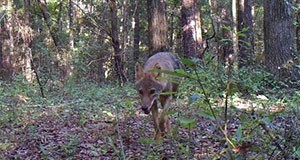 The omnivorous coyote is a relative newcomer to Florida that plays an important role in ecosystems and food webs. Of particular importance and possible benefit may be their potential ability to control populations of pest species such as some rodents. Although rare, there are situations where coyotes can become dangerous or damaging. In this 4-page fact sheet, we present some facts about coyotes, describe dangers and problems they may cause, and provide suggestions on how to cope with these issues. Written by Lauren Watine, William M. Giuliano, Holly K. Ober, Raoul Boughton, Alexander Gulde, Angeline Scotten, and published by the UF Department of Wildlife Ecology and Conservation, December 2014. (Photo: W. M. Giuliano, UF/IFAS)
The omnivorous coyote is a relative newcomer to Florida that plays an important role in ecosystems and food webs. Of particular importance and possible benefit may be their potential ability to control populations of pest species such as some rodents. Although rare, there are situations where coyotes can become dangerous or damaging. In this 4-page fact sheet, we present some facts about coyotes, describe dangers and problems they may cause, and provide suggestions on how to cope with these issues. Written by Lauren Watine, William M. Giuliano, Holly K. Ober, Raoul Boughton, Alexander Gulde, Angeline Scotten, and published by the UF Department of Wildlife Ecology and Conservation, December 2014. (Photo: W. M. Giuliano, UF/IFAS)
http://edis.ifas.ufl.edu/uw397
Tag: Managing Conflicts with Wildlife series
Managing Conflicts with Wildlife: Living with Wild Hogs
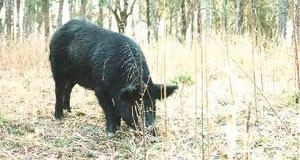 Wild hogs are a popular species, pursued and hunted by many throughout Florida. They are also an important food source for the endangered Florida panther.
Wild hogs are a popular species, pursued and hunted by many throughout Florida. They are also an important food source for the endangered Florida panther.
But there are situations where they can become dangerous or damaging. In this 4-page fact sheet, we present some facts about hogs, describe dangers and problems they may cause, and provide suggestions on how to cope with these issues. Written by William M. Giuliano, Holly K. Ober, Lauren Watine, Raoul Boughton, and Don Coyner, and published by the UF Department of Wildlife Ecology and Conservation, December 2014. (Photo: M.S. Smith)
http://edis.ifas.ufl.edu/uw400
Managing Conflicts with Wildlife: Living with Alligators
 American alligators are found in only 10 states in the southeastern U.S. In most situations alligators do not harm people, but they can pose potential dangers to people in some situations. In this 3-page fact sheet, we present some facts about alligators, describe their potential threats to people and pets, and provide suggestions on how to cope with these risks. Written by Holly K. Ober, Harry J. Dutton, Allan R. Woodward, Lindsay J. Hord, and William M. Giuliano, and published by the UF Department of Wildlife Ecology and Conservation, November 2014.
American alligators are found in only 10 states in the southeastern U.S. In most situations alligators do not harm people, but they can pose potential dangers to people in some situations. In this 3-page fact sheet, we present some facts about alligators, describe their potential threats to people and pets, and provide suggestions on how to cope with these risks. Written by Holly K. Ober, Harry J. Dutton, Allan R. Woodward, Lindsay J. Hord, and William M. Giuliano, and published by the UF Department of Wildlife Ecology and Conservation, November 2014.
http://edis.ifas.ufl.edu/uw393
Managing Conflicts with Wildlife: Living with Bears
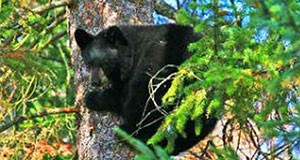 Black bears are omnivorous, enigmatic animals that help maintain healthy forests by dispersing seeds of plants they eat. Bear watching is a favorite pastime for many Floridians throughout the state. Bears are generally secretive and rarely a problem for people. But there are rare situations where they can become dangerous or damaging. In this 4-page fact sheet, we present some facts about bears, describe dangers and problems they may cause, and provide suggestions on how to cope with these issues. Written by William M. Giuliano, Holly K. Ober, Lauren Watine, Eric Hellgren, Raoul Boughton, and Dave Telesco, and published by the UF Department of Wildlife Ecology and Conservation, December 2014.
Black bears are omnivorous, enigmatic animals that help maintain healthy forests by dispersing seeds of plants they eat. Bear watching is a favorite pastime for many Floridians throughout the state. Bears are generally secretive and rarely a problem for people. But there are rare situations where they can become dangerous or damaging. In this 4-page fact sheet, we present some facts about bears, describe dangers and problems they may cause, and provide suggestions on how to cope with these issues. Written by William M. Giuliano, Holly K. Ober, Lauren Watine, Eric Hellgren, Raoul Boughton, and Dave Telesco, and published by the UF Department of Wildlife Ecology and Conservation, December 2014.
http://edis.ifas.ufl.edu/uw396
Managing Conflicts with Wildlife: Living with Frogs
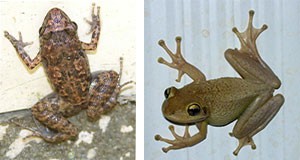 Frogs control garden pests such as insects and slugs and serve as a food source for many larger wildlife species. Research on the substances frogs secrete through their skins has even led to the creation of new painkillers and antibiotics. Most frogs in Florida are reclusive and harmless to people, but two species of frogs that have invaded Florida can be harmful to humans and their pets. This 4-page fact sheet presents some facts about native frogs, describes the problems invasive frogs cause, and provides suggestions on how to cope with problem frogs. Written by Steve Johnson, Holly K. Ober, and William M. Giuliano, and published by the UF Department of Wildlife Ecology and Conservation, November 2014. (Photos: Steve Johnson, UF/IFAS)
Frogs control garden pests such as insects and slugs and serve as a food source for many larger wildlife species. Research on the substances frogs secrete through their skins has even led to the creation of new painkillers and antibiotics. Most frogs in Florida are reclusive and harmless to people, but two species of frogs that have invaded Florida can be harmful to humans and their pets. This 4-page fact sheet presents some facts about native frogs, describes the problems invasive frogs cause, and provides suggestions on how to cope with problem frogs. Written by Steve Johnson, Holly K. Ober, and William M. Giuliano, and published by the UF Department of Wildlife Ecology and Conservation, November 2014. (Photos: Steve Johnson, UF/IFAS)
http://edis.ifas.ufl.edu/uw394
Managing Conflicts with Wildlife: Living with Snakes
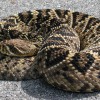 Snakes provide numerous benefits to people and to the environment, by controlling rat and mice populations in the environment, for example. Or in the laboratory, where pygmy rattlesnake venom research helped develop medicine to thin the blood of heart attack patients. Most snakes are secretive and rarely bother people, but there are situations where some snakes can become dangerous. In this 4-page fact sheet, we present some facts about snakes, describe dangers they may cause, and provide suggestions on how to cope with these dangers. Written by Holly K. Ober, Steve Johnson, and William M. Giuliano, and published by the UF Department of Wildlife Ecology and Conservation, November 2014. (Photo: Steve Johnson)
Snakes provide numerous benefits to people and to the environment, by controlling rat and mice populations in the environment, for example. Or in the laboratory, where pygmy rattlesnake venom research helped develop medicine to thin the blood of heart attack patients. Most snakes are secretive and rarely bother people, but there are situations where some snakes can become dangerous. In this 4-page fact sheet, we present some facts about snakes, describe dangers they may cause, and provide suggestions on how to cope with these dangers. Written by Holly K. Ober, Steve Johnson, and William M. Giuliano, and published by the UF Department of Wildlife Ecology and Conservation, November 2014. (Photo: Steve Johnson)
http://edis.ifas.ufl.edu/uw395